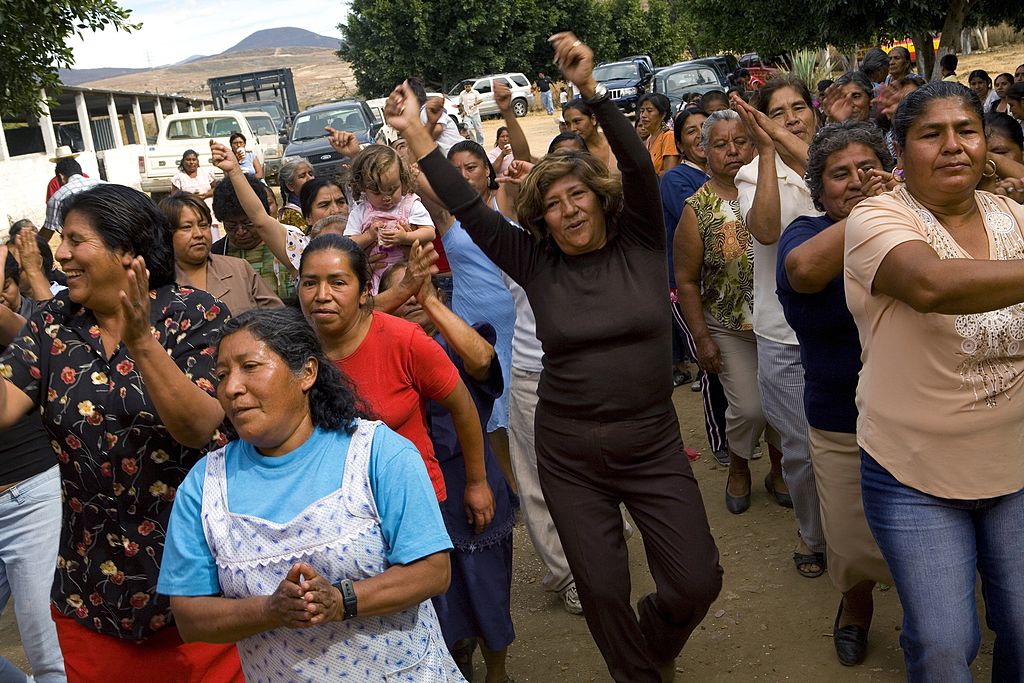This article is adapted from AQ’s special report on migration | Leer en español
Migration is nothing new in Latin America. In 2017 almost 37 million Latin Americans lived outside their country of origin, supplying almost one in seven of the world’s immigrants. Many moved to the United States and Europe, but a number settled in neighboring countries. Half of the migrant population in Argentina — about 1 million people — is made up of Bolivians and Paraguayans. There are 25 Peruvians residing in Chile today for every one who did in 1990.
Broadly speaking, Latin Americans have been generous in welcoming these new arrivals.
But those episodes occurred over long periods, even decades. What is new is the crisis-driven massive migration within Latin America in recent years, which includes Venezuelans but also Haitians, Nicaraguans and other Central Americans. Countries, and particularly local communities, urgently need money — and quite a bit of it — and humanitarian aid to help assimilate these new arrivals. They also require the kinds of assistance that don’t make the headlines, but are just as critical: knowledge and institutional capacities. This will ensure that migration becomes an economic opportunity for Latin America, not just a short-term burden.
Numerous studies indicate that in the long term, migration could make economies stronger and more vibrant. But there is plenty of short-term pain to get to that potential long-term gain. Many of these migrants are moving to countries that don’t have a history of integrating immigrants on this scale, or the deep budgets of wealthier countries and their cities.
To cite just one example: Toronto has a population of almost 6 million, nearly half of whom are foreign born. Its per-capita GDP is $45,000. In contrast, Lima’s population is twice that of Toronto and its per capita GDP one third as much, at $15,000, and until recently only 1% of its population was foreign born. And yet Lima, with fewer resources and without Toronto’s tradition of integrating migrants, has seen a sudden influx of hundreds of thousands of mostly Venezuelan arrivals. In addition, once migrants move, they tend to stay. Almost 70% of the foreign-born population in countries belonging to the Organization for Economic Cooperation and Development (OECD) have stayed more than 10 years.
All this makes the process traumatic, both for families fleeing in often desperate conditions as well as for communities receiving immigrants. And public opinion is shifting against migrants. In 2017, Colombians agreed by a two-to-one margin that migrants from Venezuela should be welcomed, given the situation in Venezuela. By mid-2019, only 42% agreed. One-third of Venezuelans in Peru report having suffered discrimination.
Evidence indicates that employment opportunities or wages of natives are likely to suffer where immigrants compete for the same jobs. Workers already in the recipient countries’ labor market who are the closest substitutes for immigrants are most likely to experience immigration-induced wage declines or employment losses.
The fiscal challenge
The impact of immigrants is not limited to the labor market.
Local governments, especially those in bordering communities, must spend more on teachers, nurses, classrooms, housing and other resources. Without those investments, the quality of these services — already stretched thin — would decline, and housing prices would go up. Strained health services would struggle to contain diseases.
Migration has mixed impacts on a country’s fiscal revenues. On the one hand, there is an increase in the public expenditures associated with the sharp rise in the demand for social services. On the other hand, revenues will increase from indirect taxes and income tax collection. Even if the primary balance turns positive in the medium term, though, there could be a deficit in the short term.
And this comes at a time of fiscal constraints. Eleven IDB borrowing member countries — including the migrant recipient nations of Colombia and Ecuador — have announced or are implementing fiscal adjustment plans.
How much money is needed?
Before COVID-19, the Colombian government estimated that spending could increase between 0.4% and 0.8% of GDP, mainly in education and health care.
Also prior to the pandemic, the government of Ecuador estimated that properly addressing the situation of Venezuelan migrants would require resources of around $550 million, or 0.5% of Ecuador’s annual GDP from 2019 to 2021. COVID-19 will increase these numbers even more. When Lebanon faced a big influx of Syrian migrants beginning in 2011, the estimated cost of bringing its services back to where they were before amounted to 5.5% of its GDP.
No country can do this by itself. Donors and multilateral institutions must step up. So far, the numbers are falling short. The U.N. estimates the international community has provided $125 per Venezuelan migrant, compared with $1,500 for each Syrian refugee. In the short term, agencies that help migrants at the border need more resources, but we also need to do more to help local communities integrate migrants in ways that contribute to economic development, with resources, research and coordination. For instance, regional interoperability of data systems (identity, health, skills) or the harmonization of migration legal frameworks (visas, work permits) are crucial elements to better integrate migrants. This collective effort by countries to address migration flows can be supported by platforms provided by multilateral institutions.
In 2019, the Inter-American Development Bank (IDB) approved the use of $100 million of technical assistance grants to be blended with additional grants from donor countries to leverage a total of $ 1 billion in concessional loans for countries that have received large and sudden inflows of migrants.
The unprecedented nature and complexity of migration in Latin America and the Caribbean will also require unique and creative solutions. For instance, IDB programs are helping Colombia upgrade its software systems to better match job seekers with job providers in ways that help all vulnerable populations — Venezuelan as well as Colombian. In Ecuador, we are also using big data to identify the urban regions where migrants are living so governments can better target social services. Innovation and creativity will not necessarily come from applying new technologies—something that will undoubtedly be important—but from piloting and scaling up new execution mechanisms, leapfrogging unnecessary processes, or finding, among other things, new ways of working together with the private sector.
All this is necessary because the key here is not only to help migrants, but to improve the lives of vulnerable native populations, thus helping avert a costly backlash.
A great opportunity
Migration will not go away. Climate change and natural disasters, rather than just political crises, will drive population movements. Some estimates place the number of environmental migrants at 200 million by 2050, a figure equal to the current worldwide migrant stock. The U.N. estimates that eight countries of the region — seven in Central America and the Caribbean (Guatemala, Costa Rica, El Salvador, Nicaragua, Jamaica, Haiti and Dominican Republic) and one in South America (Guyana) — are among the world’s 25 nations most at risk from natural disasters. Changing demographic trends will continue to generate incentives for people to move from countries with high fertility rates and high labor force growth to countries with relatively older populations and shortages in labor supply.
Implementing wrong policies can have consequences, from xenophobic incidents to social unrest. But when the policies are done right, migrants can be a positive force for development, particularly when they are integrated socioeconomically, have access to the formal labor market, pay taxes and contribute to the health care system. Migrants tend to be young, providing a demographic dividend, particularly for countries with aging populations. Migration has also been associated with better employment for natives through occupational mobility. Research has shown that other impacts of migration in destination countries include increased foreign direct investment, exports and entrepreneurship. The contribution of all these channels can be substantial. Not only is integrating migrants the right thing to do, it could become a great development opportunity.
—
Rodríguez Chatruc is an economist at the Migration Initiative of the Inter-American Development Bank (IDB). Her current agenda focuses on attitudes toward immigrants and on policies to promote migrants’ integration.
Blyde is a lead economist at the Migration Initiative of the Inter-American Development Bank (IDB). Juan’s areas of research include trade, productivity, transport costs, international value chains and migration.






